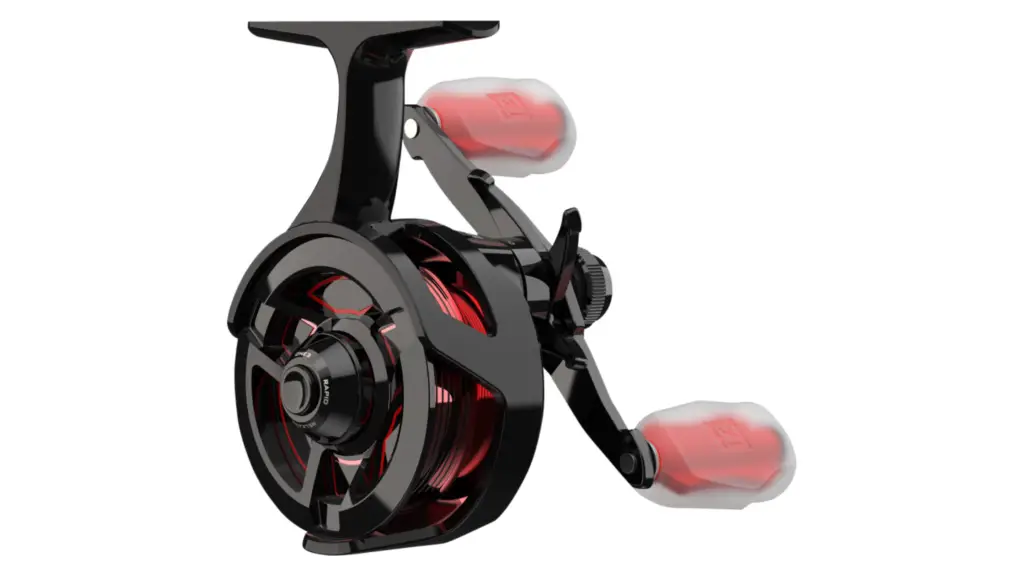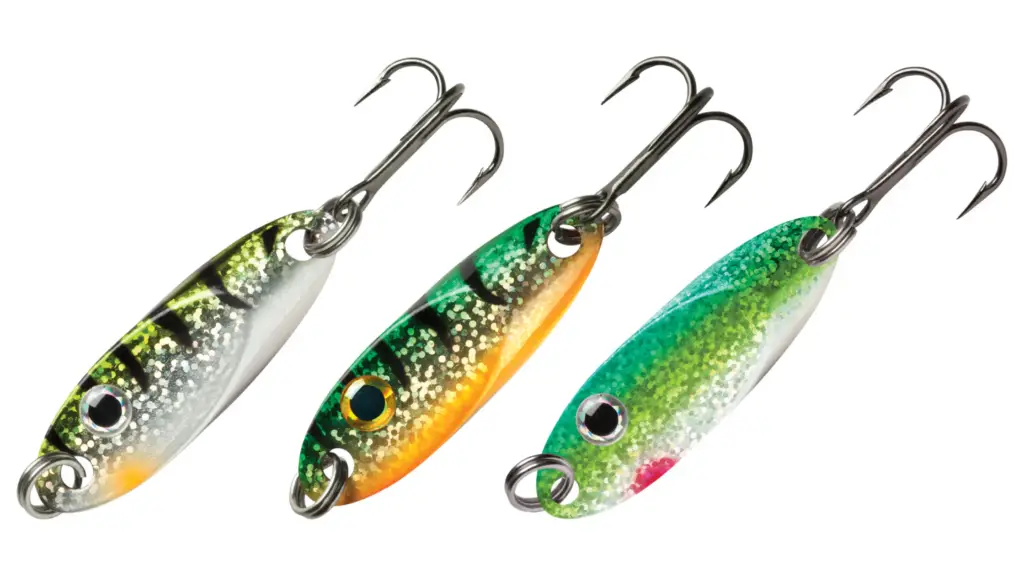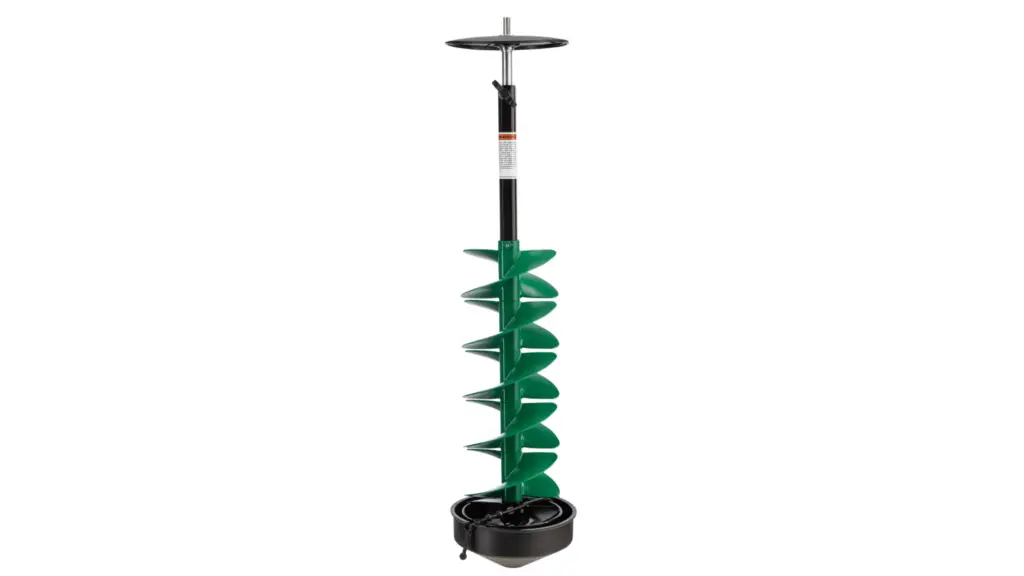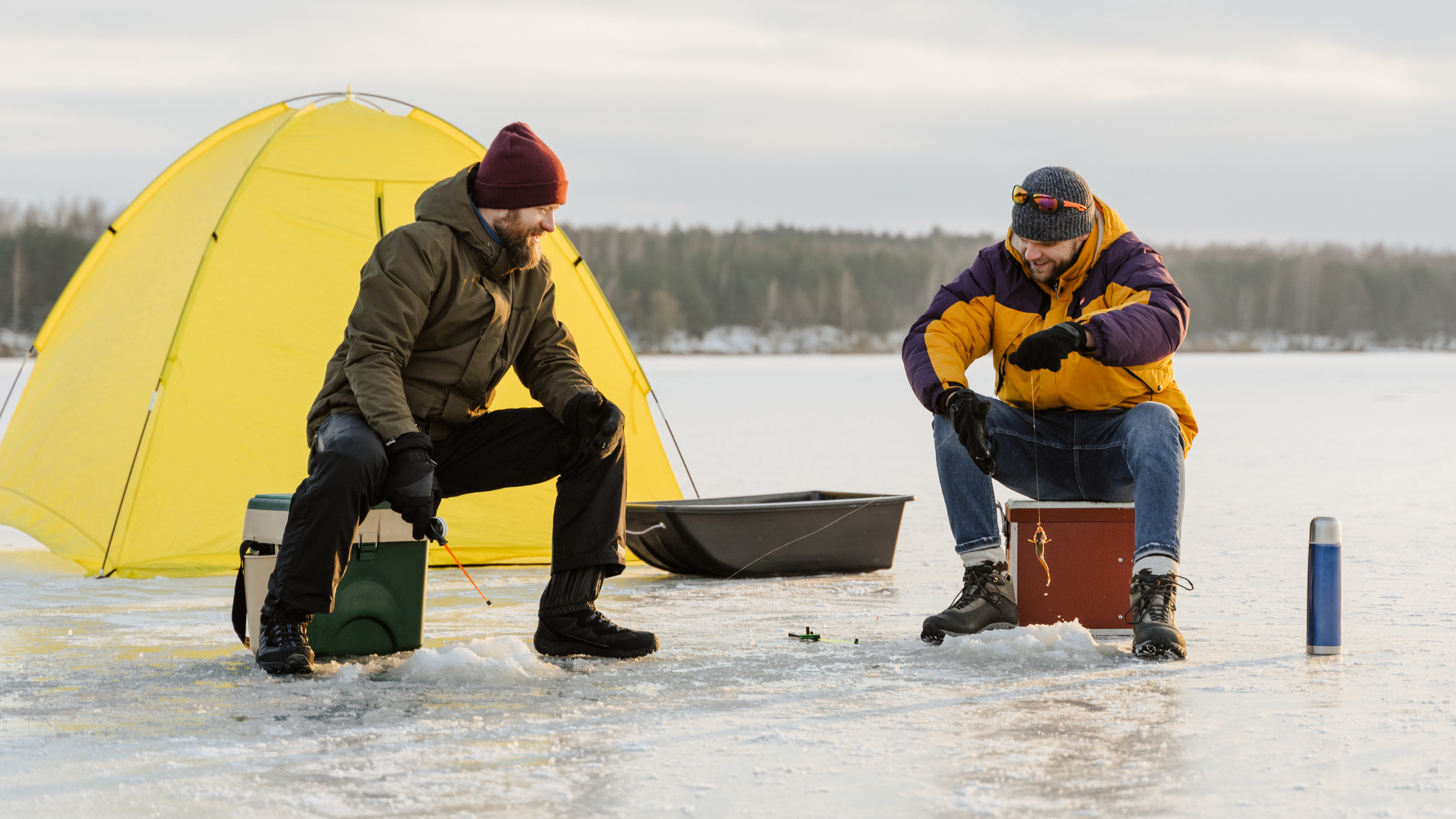Beginner’s Guide to Ice Fishing as a Hobby: Essential Tips and Techniques
Ice fishing is an engaging and rewarding winter hobby that offers a serene escape into nature coupled with the thrill of the catch.
As a beginner, you’ll discover that this pastime isn’t just about sitting by a hole on a frozen body of water; it’s an adventure that combines skill, patience, and a bit of know-how.
With proper preparation and knowledge, your foray into ice fishing can be a delightful extension of your angling passion, giving you access to fishing spots that are otherwise unreachable during warmer months.

Getting started with ice fishing requires understanding the essentials: safety, equipment, and technique. Ensuring the ice is thick enough to support your weight is fundamental for your safety.
It’s recommended that the ice be at least four inches thick for a single angler. Additionally, outfitting yourself with the right gear, which includes an auger for drilling holes, a rod or tip-up, bait, and appropriate winter attire, sets the stage for a successful and enjoyable experience.
Once you’re equipped and on the ice, it’s all about finding the right spot and employing effective fishing techniques. Fish tend to gather in schools under the ice, so once you catch a panfish, for instance, it’s smart to continue fishing at the same depth. Your first catch is an exciting moment and marks the beginning of an ice-fishing journey that often leads to a lifelong appreciation for this winter sport.
Understanding Ice Fishing

Embarking on the hobby of ice fishing can bring you closer to nature, provide a serene escape, and challenge your fishing skills in a unique environment. Safety is paramount, and understanding the history and benefits will enrich your experience.
History of Ice Fishing
Ice fishing has roots in the practices of indigenous peoples who fished through ice-covered waters to sustain their communities during the cold months. Today, advances in equipment and technology have transformed this survival activity into a popular winter sport.
Benefits of Ice Fishing
When you partake in ice fishing, you’re not just catching fish; you’re also reaping:
- Physical Health: Ice fishing requires physical activity, from drilling holes to setting up shelters, which can improve your overall fitness.
- Mental Wellbeing: The patience and focus needed for ice fishing can be meditative, offering a break from the stress of daily life.
Ice Fishing Safety
Before stepping onto the ice, remember that safety is the top priority. Here is a brief guideline to follow for ice thickness safety:
- 4 inches thick: Generally safe for walking and fishing alone.
- 5-6 inches: Supports a group of people or snowmobiles.
- 8-12 inches: Can sustain light trucks or small cars.
- 12-15 inches: Generally considered safe for medium-sized trucks.
Always check local guidelines and use caution to ensure a safe and enjoyable ice fishing experience.
Essential Ice Fishing Gear

When embarking on the journey of ice fishing, equip yourself with the right gear to ensure a safe and enjoyable experience. Each piece of equipment plays a vital role in your ability to effectively catch fish under icy conditions.
Ice Fishing Rods and Reels
Your choice of rods and reels is pivotal. Look for shorter rods designed for ice fishing that provide you with the sensitivity to feel the fish bite and the strength to reel them in. Typically, a rod and reel combination specifically for ice fishing works best.

Bait and Lures
Selecting the appropriate bait and lures enhances your chances of a successful catch. Live bait like minnows can be very effective, or you might opt for jigs and soft plastics designed to mimic the movements and appearance of prey under the ice.

Ice Augers
An ice auger is essential to drill through the ice and create a fishing hole. Manual augers are sufficient for thinner ice, but you may want a powered auger for thicker ice areas.

Shelters and Apparel
Staying warm and protected is crucial. Invest in a good quality ice fishing shelter, whether it’s a portable pop-up or an insulated permanent structure. Wear layers of thermal clothing and waterproof boots to guard against the harsh conditions.

Check out the full collection of Ice Fishing gear available from Cabelas.com here…
Getting Started

When you’re ready to try ice fishing, it’s important to focus on two key aspects: finding the right location and understanding ice conditions. These initial steps lay the groundwork for a safe and enjoyable ice fishing experience.
Choosing a Fishing Spot
To find a good ice fishing spot, consider areas known for winter fish activity. Look for local fishing reports or forums for insights on productive locations. Public lakes and ponds are a common starting point, as they often have marked access points and are subject to regular safety checks. Fishing near established shelters or groups can also be a good indication of a reliable area, but always ensure you’re respecting the space and rules of the existing fishing community.
- Check regulations: Before heading out, verify local fishing laws and acquire the necessary permits.
- Use local knowledge: Visit nearby bait shops or speak with experienced ice anglers for advice on where to fish.
Reading Ice Conditions
Understanding and accurately reading ice conditions is vital for your safety. Clear, solid ice is generally stronger than white or opaque ice, which can be filled with air and less stable.
- Ice thickness: At least 4 inches of clear, solid ice is recommended for foot travel, but local guidelines may vary.
- Look for signs: Before stepping out, observe the ice around you. Watch for cracks, water flows, or areas with snow coverage which can insulate and weaken ice below.
Safety tip: Always carry safety gear, including ice picks and a life jacket, when venturing onto the ice.
Remember, conditions can change quickly, and no ice is 100% safe. It is always recommended to check ice conditions frequently as you go.
Fishing Techniques

Mastering different fishing techniques can significantly enhance your ice fishing experience. It allows you to adapt to various conditions and behaviors of the target fish species.
Jigging
Jigging is a dynamic ice fishing technique that involves moving your lure vertically in the water to mimic prey. You’ll typically use a shorter and lighter rod suitable for the confined spaces of an ice fishing environment. Here’s the basic process:
- Lower your lure into the hole until it reaches the bottom.
- Lift the rod tip about a foot, then let the lure drop back down, keeping the line taut.
This technique can help you attract predatory fish such as walleye and northern pike by simulating the movement of injured baitfish.
Tip-Up Fishing
Tip-Up fishing is a passive approach that allows you to fish multiple locations and depths simultaneously. A tip-up device is set on the ice above your hole with baited line suspended underneath. Here’s how to set it up:
- Place your tip-up over the hole, with the flag positioned to signal when a fish takes the bait.
- Bait your hook with live bait, such as minnows, which are effective for attracting a wide range of species.
With tip-ups, you can cover a larger area, increasing your chance of a catch, while freeing you up to focus on active jigging in another spot.
Rules and Regulations

When embarking on the journey of ice fishing, it is imperative that you familiarize yourself with and adhere to the specific rules and regulations that govern this activity. These are in place to ensure safety, conservation, and fair play for all enthusiasts.
Licenses and Permits
Before you drop a line through the ice, you must have a valid fishing license. Every state has different requirements and methods for obtaining a license, whether it’s online, at a local retail store, or through the state’s fish and wildlife agency.
Failure to possess a license can result in fines or other penalties. Check the Fishing License Requirements for your state to ensure compliance.
Catch Limits and Size Restrictions
Be aware that there are limits on how many fish you can catch and keep, which are known as catch or creel limits. There are also restrictions on the size of the fish you can legally harvest.
These regulations are in place to maintain fish populations at sustainable levels. It’s your responsibility to be informed about the Catch Limits and Size Restrictions for the species you’re targeting in the specific water body you are fishing. Keep a measuring tool handy to ensure you are accurately assessing your catch.
Conservation Considerations

When you venture into ice fishing, it is crucial to understand your impact on local fish populations and their habitats. Adopting ethical fishing practices and supporting conservation efforts ensures the longevity and health of the aquatic ecosystem.
Catch and Release Practices
- Use Barbless Hooks: These create less damage to a fish’s mouth, which is critical for their survival upon release.
- Handling Fish: Wet your hands before handling the fish to protect their slime coat, and avoid squeezing or holding them out of the water for prolonged periods.
- Proper Release: Gently return the fish to the water, supporting its belly and moving it back and forth to aid water flow over its gills.
Habitat Preservation
- Respect Ice Thickness Guidelines: Reckless behavior can harm not only your safety but the environment as well. Ice that can safely support activities is paramount.
- Avoid Littering: Leaving behind waste, such as bait containers or fishing lines, can be detrimental to wildlife.
- Protect Native Species: Be mindful of invasive species and ensure you don’t introduce non-native species that could disrupt the ecosystem balance.
Enhancing Your Experience

To truly elevate ice fishing as a hobby, incorporating modern technology and engaging with a community of like-minded individuals can make a significant difference in your enjoyment and success.
Using Technology
By integrating cutting-edge technology, you can transform your ice fishing experience from traditional to modern with ease.
A fish finder is an invaluable tool that provides real-time data on fish location, depth, and bottom contour. Consider investing in a portable, ice-specific fish finder to optimize your time on the ice.
Additionally, mobile apps can offer weather forecasts, ice safety alerts, and GPS for marking successful spots.
- Key Technologies:
- Fish finder for locating fish
- GPS for navigation and spot-marking
- Weather apps for up-to-date conditions
Joining a Community
Ice fishing doesn’t have to be a solitary activity. Joining a community opens up opportunities for learning, sharing, and camaraderie.
Connect with local ice fishing clubs or online forums to exchange tips, find fishing buddies, and learn about the best fishing spots. Participating in ice fishing tournaments can also be a fun and competitive way to challenge yourself and meet fellow enthusiasts.
- Community Involvement:
- Local ice fishing clubs
- Online forums and groups
- Ice fishing competitions and events
Frequently Asked Questions

Below are answers to common queries to help you get started with ice fishing and improve your experience on the ice.
What essential gear do I need to start ice fishing?
Your basic ice fishing gear should include an ice fishing rod and reel designed for the cold environment, an ice auger for drilling holes, and appropriate lures or bait. Don’t forget a bucket or a chair to sit on, and a sled to carry your gear.
What types of bait are most effective for ice fishing?
Live bait such as minnows are often effective for ice fishing, as well as jigs and soft plastics that mimic the movement of prey in the water. Specific baits will depend on the fish species you’re targeting.
What are the key features to look for in an ice fishing shelter?
An ideal ice fishing shelter is portable, easy to set up, and provides good insulation. Look for shelters with enough space to comfortably fit you and your gear, and that offer visibility for tip-ups outside.
Can you provide tips for ice fishing on a budget?
To ice fish on a budget, start with basic equipment and consider buying used gear. You can also make your own jigs and lures, and choose a manual auger over a power auger to save on cost.
How can I stay safe while ice fishing?
Ensure the ice is thick enough to support your weight. Always bring safety equipment like ice picks, a whistle, and a life jacket. Inform someone about your location and expected return time, and never ice fish alone.
What mistakes should be avoided by beginners in ice fishing?
Avoid common mistakes like overlooking local fish behavior, using the wrong bait, and not dressing in layers for the cold. Also, don’t forget to verify ice safety and be aware of changing weather conditions.

